From state-of-the-art aerial imaging systems of the ’60s to Boeing’s Airborne Laser project in the the 21st century, photonics technology has played a vital role in the modern military. In honor of Photonics Spectra’s 50th anniversary, the editors compiled a retrospective on major advances by era.
The Airborne Laser and Advances in Airborne Optics
(2006-Present)
In the early 2000s, Boeing and other contractors developed the Airborne Laser (ABL), consisting of lasers aboard a plane that would effectively target and destroy ballistic missiles during the boost phase of flight. This same era saw advances in airborne optical
systems and larger detectors capable of operating in expanded spectral ranges.
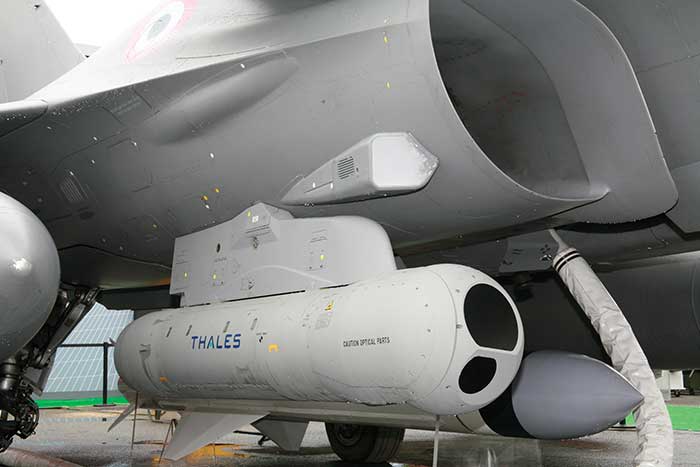
Mounted in structural assemblies, optics help ensure airborne sensors produce the clearest possible image. Courtesy of Thales Group, EuroPhotonics, Winter 2016.
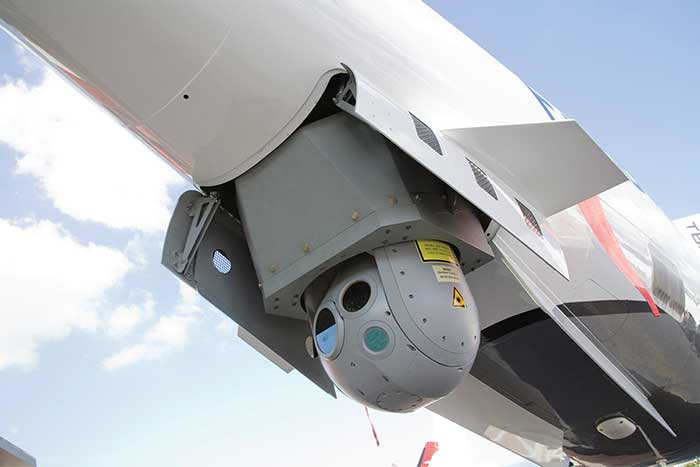
Optics-based systems have to be protected in flight, which may be done through a clear enclosure or via a retractable system. Courtesy of Thales Group, EuroPhotonics, Winter 2016.
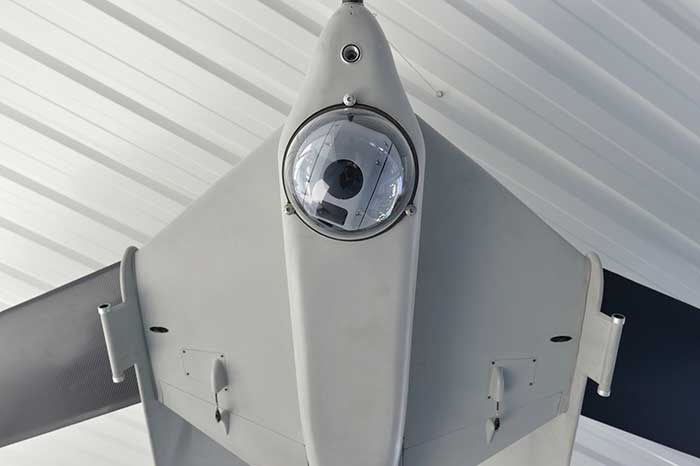
Optics-based systems have to be protected in flight, which may be done through a clear enclosure or via a retractable system. Courtesy of Thales Group, EuroPhotonics Winter 2016.
Spectrometers Detect Chemical and Biological Agents
(1991-2006)
By the early ’90s, chemical and biological warfare was becoming a more evident threat. Miniature spectrometers that incorporated UV lasers could identify agents by their reflective properties.
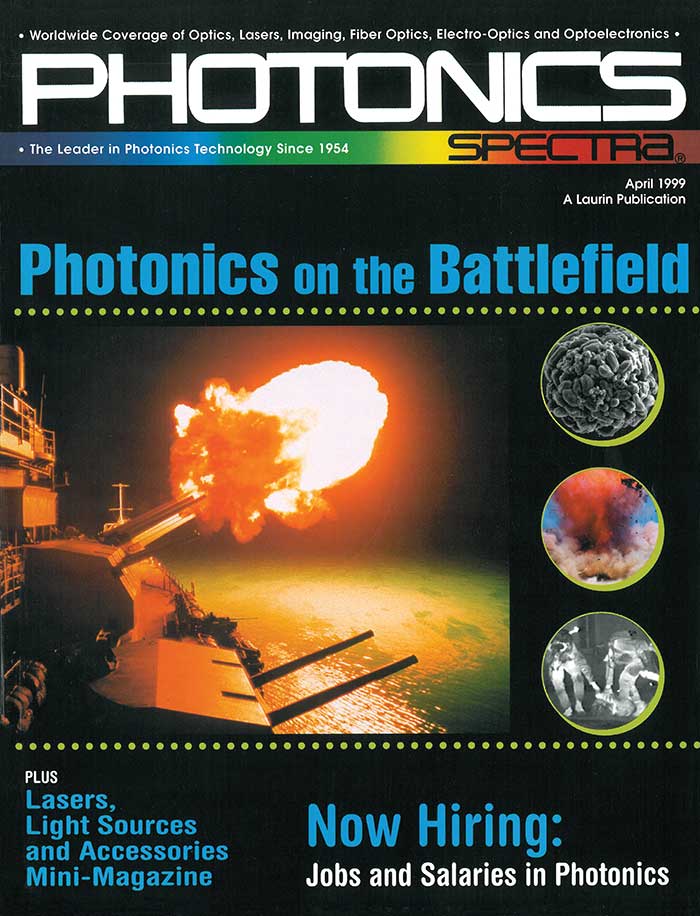
Photonics Spectra, April 1999.
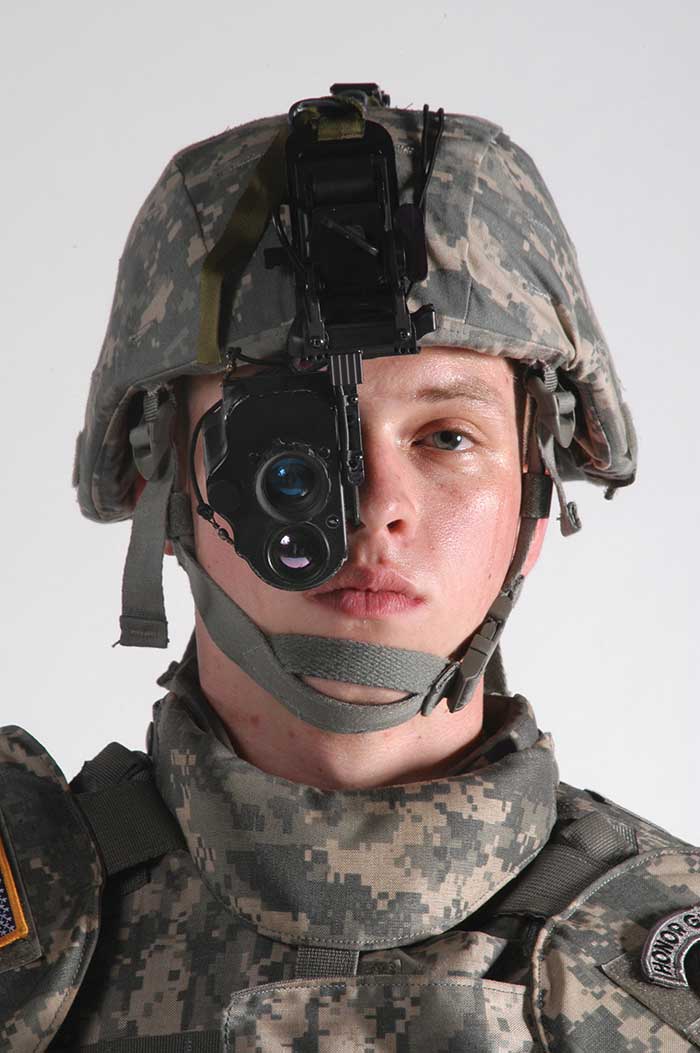
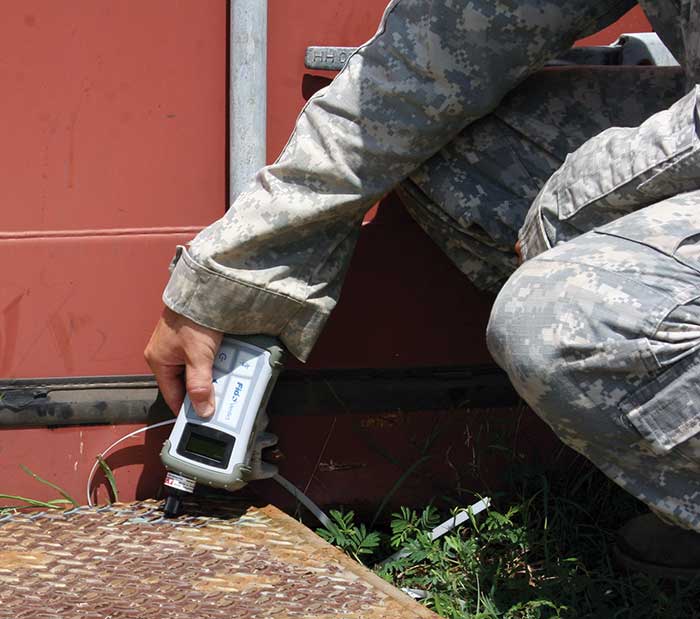
A National Guardsman samples a spill using a handheld device and Raman spectroscopy to identify the liquid. Courtesy of ICx Technologies, Photoncis Spectra, December 2009.
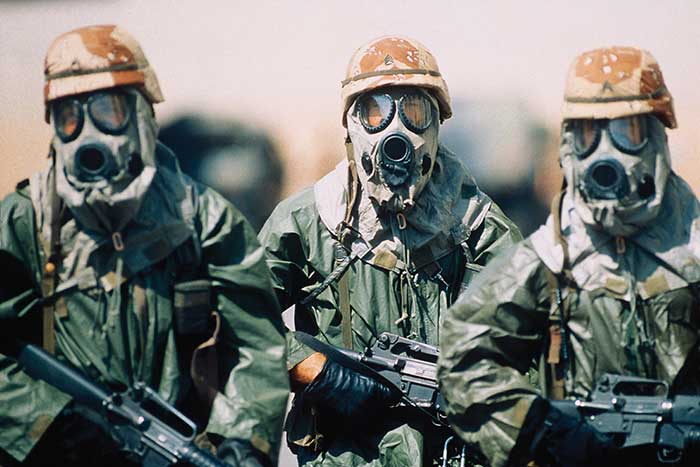
Mid-infrared diode lasers enable early warning systems against chemical warfare agents. Courtesy of Quintessence Photonics Corp. Photonics Spectra, December 2005.
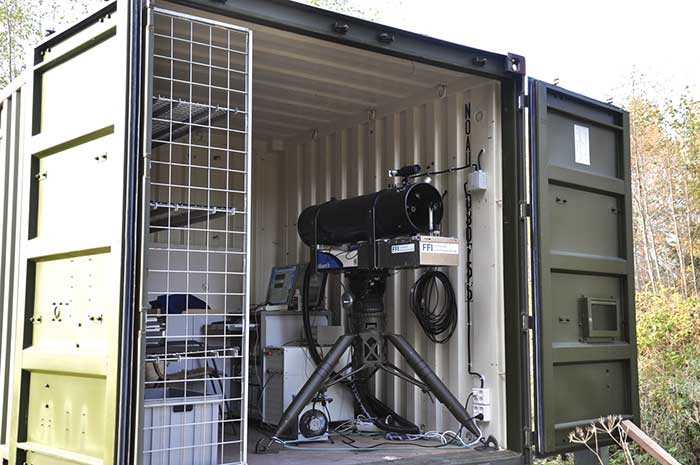
The lidar UV laser-induced fluorescence system demonstrated at the Norwegian Defence Research Establishment added a 294-nm laser to the more conventional 350-nm laser to improve identification of harmful bioaerosols such as anthrax. Courtesy of Ø.Farsund, FFi Norway, Photonics Spectra April 2013.
IR Imaging Evolves
(2000-Present)
The 21st century has seen key advances in IR imaging, allowing for cheaper, lighter and less power-hungry equipment. Materials such as strained superlattice gallium arsenide allowed for greater sensitivity and higher operating temperature.

Enhanced night-vision goggles like these, developed for the U.S. Army’s Night Vision and Electronic Sensors Directorate, fuse
IR-based thermal imaging with visible image intensification. Courtesy of Night Vision and Electronics Sensors Directorate Public Affairs,
Photonics Spectra, April 2013.
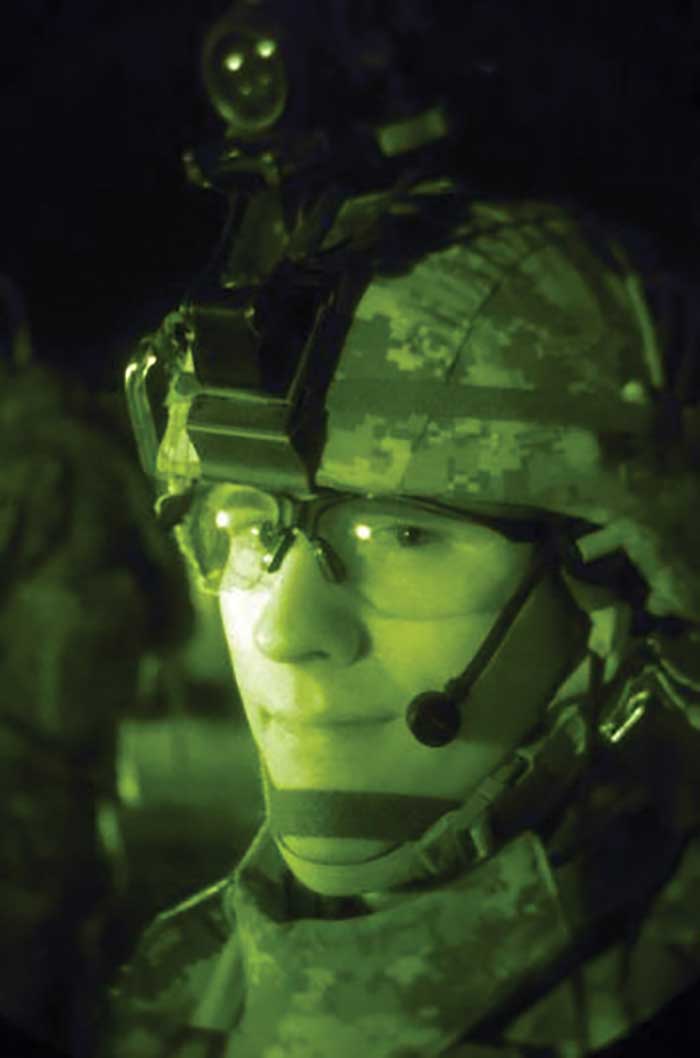
Courtesy of U.S. Air Force photo by Tech. Sgt. Steve Faulisi, Balad Air Base, Photonics Spectra, April 2010.
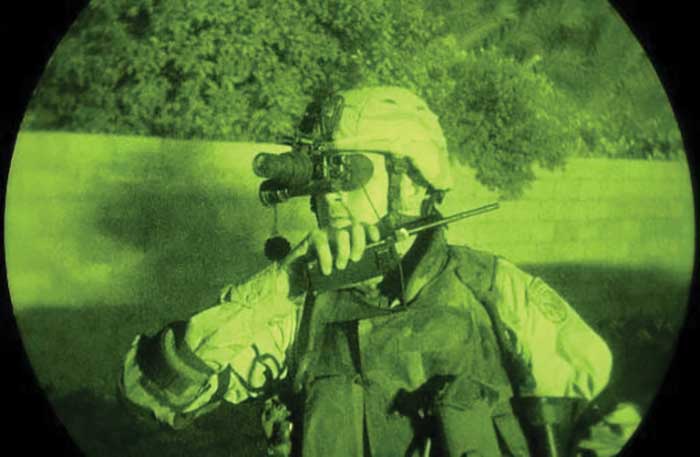
A close-up night-vision view of a U.S. Army soldier, 1st Battalion, 30th Infantry Regiment, wearing a Kevlar helmet with night-vision goggles attached. Night-vision light-enhanced photography showing U.S. Army Sgt. 1st Class Arnold Stone, 2nd Battalion, 108th New York Army National Guard, wearing his AN/PSV-7D night-vision goggles while using a handheld radio to call for a situation report. Courtesy of U.S. Air Force photo by Tech. Sgt. Steve Faulisi, Balad Air Base, Photonics Spectra, April 2010.
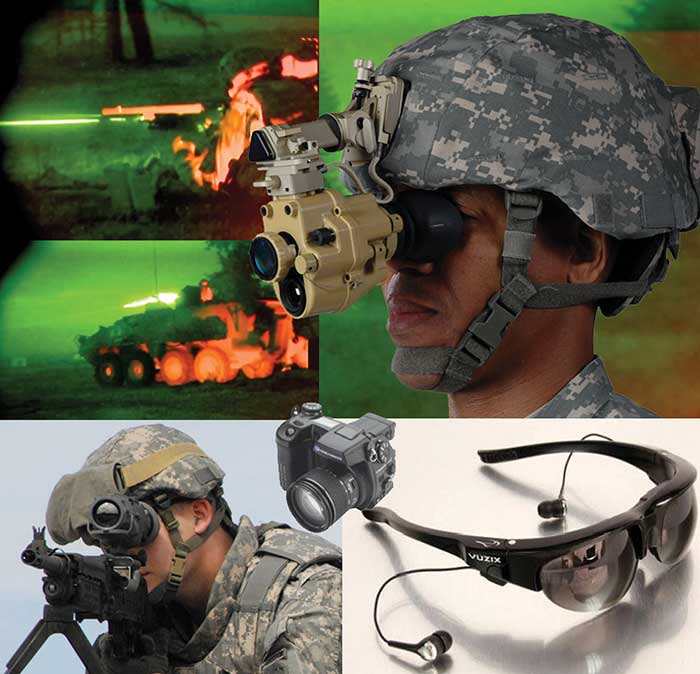
Microdisplays, which use a chip near the eye to create the virtual image of a much larger screen farther away, are used in military applications to fuse sensors and make the invisible visible. The technology is found in devices worn by soldiers (top right, bottom left) as well as in consumer products (camera and glasses, lower right). Courtesy of Kopin Corp., Photonics Spectra April 2010.
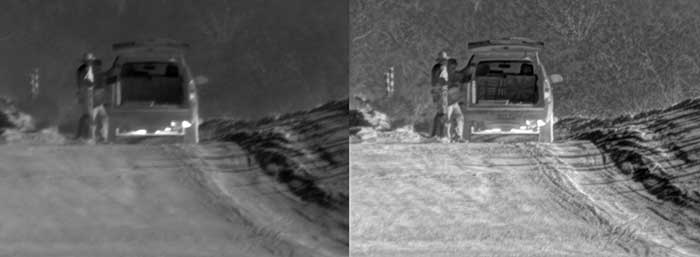
Technology can sharpen a live or recorded image (left) by removing turbulence from pixels (right), allowing the military to detect, recognize and identify people and objects at greater distances. These infrared images were taken during testing in the Arizona desert. Courtesy of General Dynamics Advanced Information Systems, Photonics Spectra January 2013.
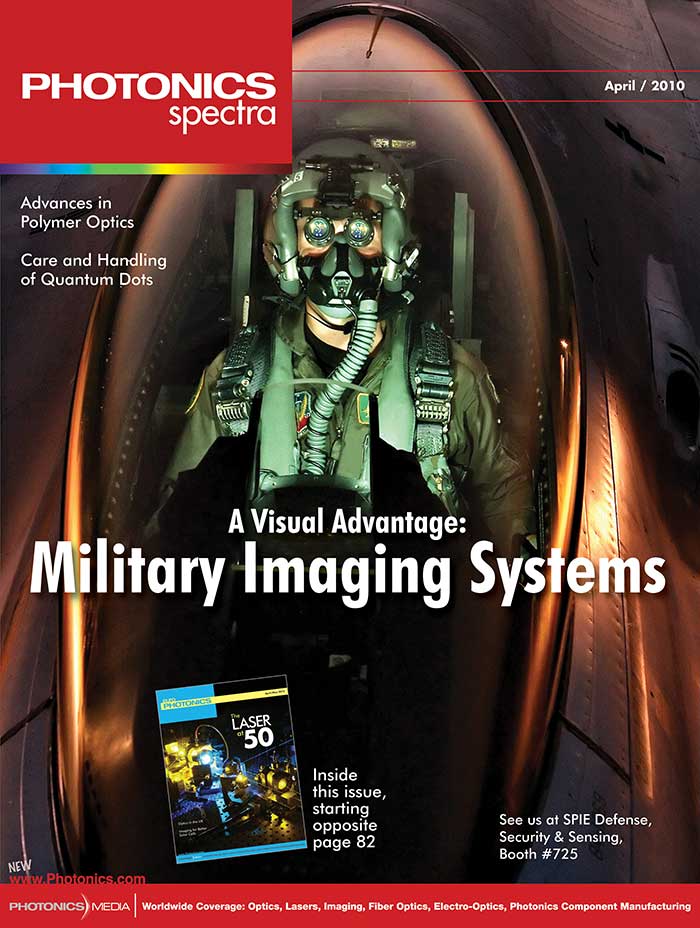
U.S. Air Force First Lieutenant “Sqwirll,” an F-16 Fighting Falcon
pilot with the Vermont Air National Guard, peers out of his cockpit
through night-vision goggles. Courtesy of U.S. Air Force photo by Master
Sergeant Rob Trubia, Photonics Spectra April 2010.
Aerial Imaging
(1966-1976)
During the late ’60s and early ’70s, the military called for more advanced imaging systems to produce sharp, high-resolution images taken from planes, as seen in “Improving the Photogrammetric Characteristics of Aerial Cameras,” in the Jan./Feb. 1968 issue of Optical Spectra.
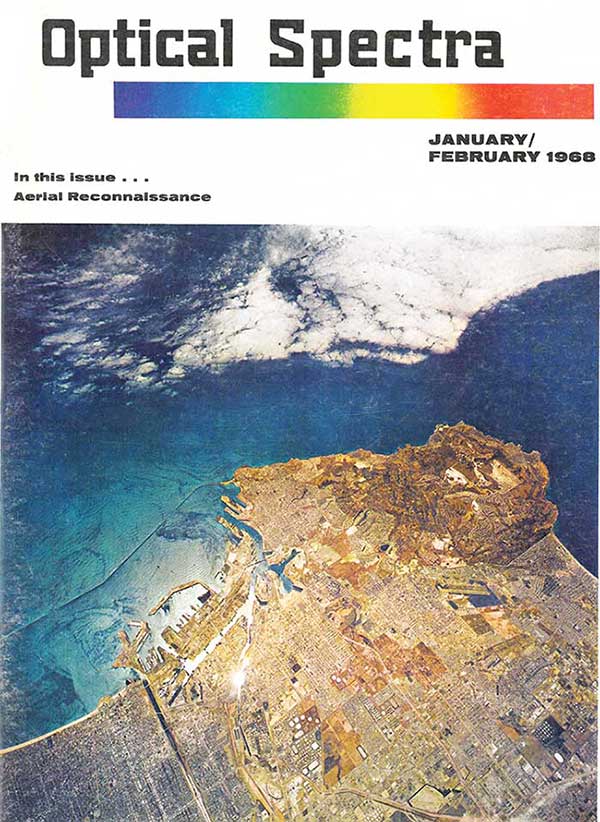
This high-altitude U.S. Air Force photograph of Los Angeles, Calif. was taken by Fairchild Space and
Defense Systems’ KC-4 camera equipped with a 6-in. f/5.6 Geocon 1 lens on Kodak MS Ektachrome film. Courtesy of Optical Spectra January/Februay 1968.
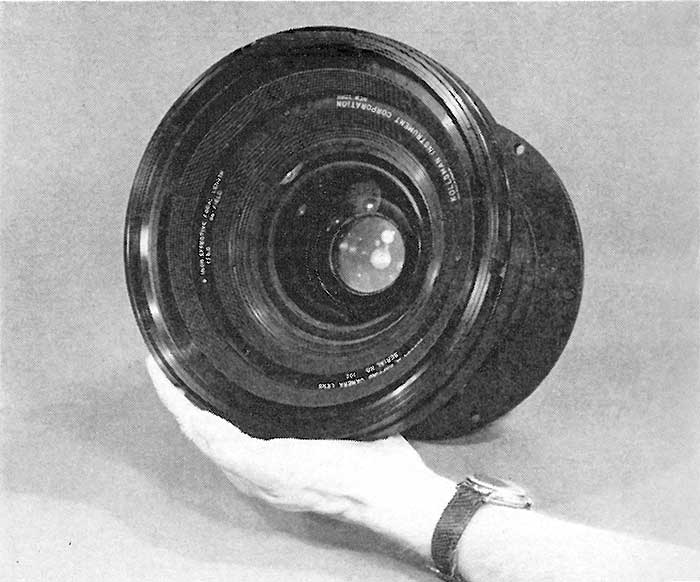
The 6-in. f/5 Geocon IV lens designed by James G. Baker. Courtesy of Optical Spectra, January/February 1968.
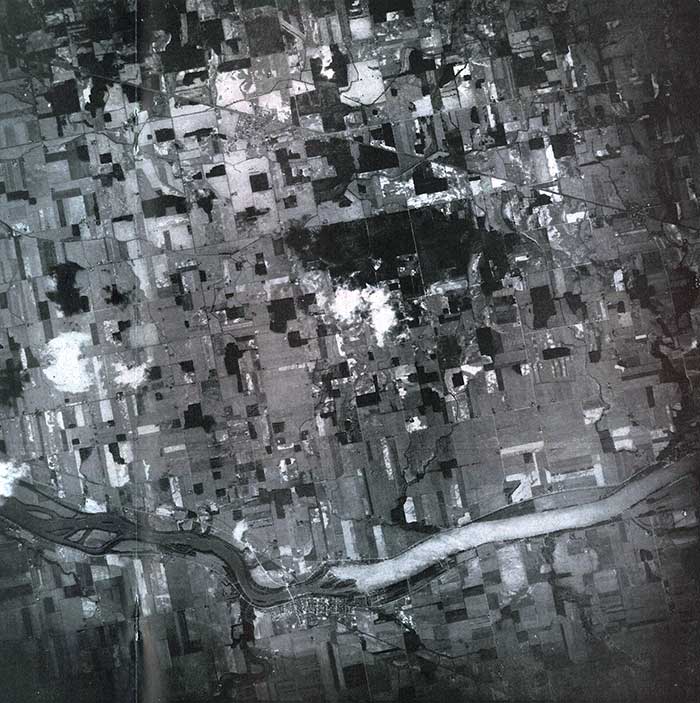
This photograph of Phoenix, Ariz., was recorded by the
Fairchild-designed KC-6A camera installed in an RC-135A aircraft from an
altitude of 25,000 feet. Sky Harbor Airport is near the center of the
photo. Courtesy of Optical Spectra, January/February 1968.
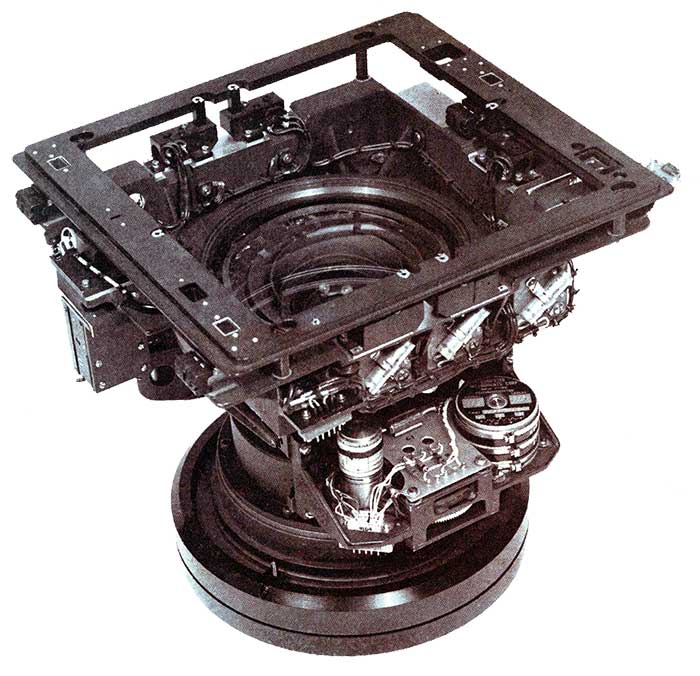
Focal plane and Geocon IV lens cone assembly of the Fairchild KC-6A mapping camera. Courtesy of Fairchild, Optical Spectra January/February 1968.
Directed Energy Weapons
(1991-2006)
Directed Energy Weapons (DEWs) may not have been integrated into the military as much as speculated, but the research influenced the development of other directed energy applications. Industrial photonic equipment (welding, machining, etc.) benefited from the research done for DEWs and continually impacts manufacturing.
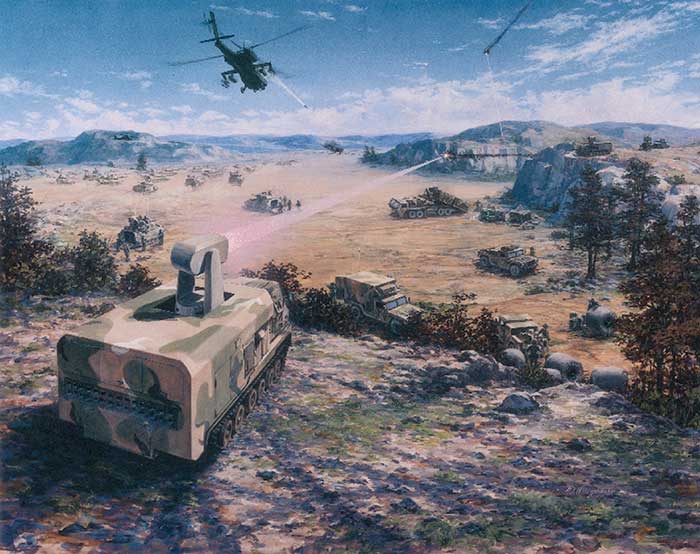
An artist’s rendition of the general area defense integrated anti-missile (GARDIAN) laser system proposed by TRW of Redondo Beach, Calif., to the U.S. Army for use against cruise missiles. Courtesy of TWR Inc., Photonics Spectra, June 1994.
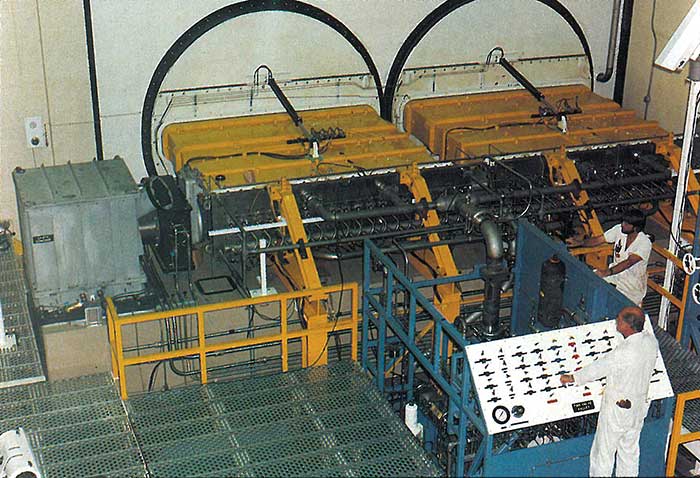
MIRACL laser in test configuration. Courtesy of TRW, Photonics Spectra, July 1991.
Star Wars
(1984-1991)
The Strategic Defense Initiative epitomized the Reagan era. The program aimed to protect the U.S. from ballistic nuclear attacks using space-based lasers. Investigations involved x-ray and chemical lasers and spurred advances in IR imaging.
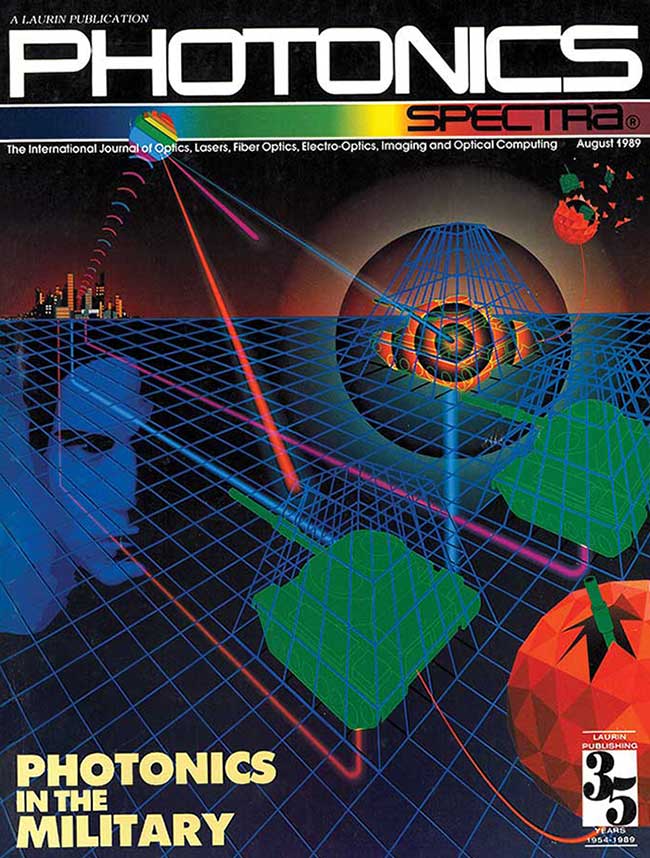
Stampede to “Star Wars” - It was just two and one-half years ago that President Reagan, in an emotional finale to an otherwise forgettable speech, called for the development of a space-based antimissile defense system that would make nuclear weapons “impotent and obsolete.” Today it would be difficult to find a first-rate scientist who considers that a realistic, attainable goal. Yet the “Star Wars” program that it hatched is on its way to becoming a gigantic new industry — potentially “the first trillion-dollar weapons project.” … A recent Wall Street Journal article describes “Star Wars” as the “business opportunity of a generation,” and speaks of military suppliers engaging in a veritable “feeding frenzy” to get a share of the $26 billion allocated for the program’s first five years. The photonics industry is among the big potential beneficiaries. — Teddi C. Laurin, Photonics Spectra, July 1985. Courtesy of Photonics Spectra, August 1989.
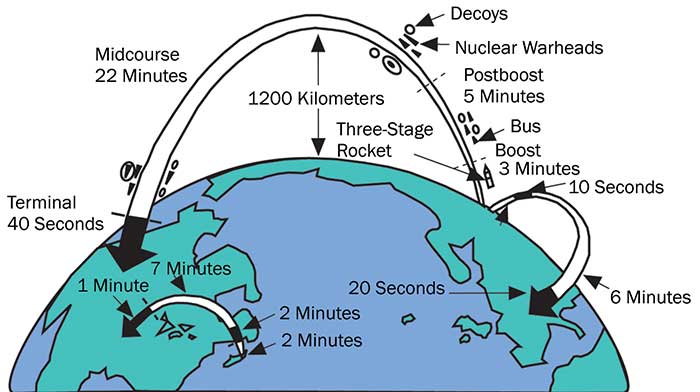
The missile thread that the Strategic Defense Initiative
was charged with defending against. Courtesy of Photonics Spectra,
August 1988.
Dawn of Fiber Optic Communications
(1976-1984)
During the late ’70s, the military began integrating optical technology with radar and testing whether the technology could withstand the stress of the battlefield. This laid the groundwork for advances in communications that would pave the way for faster transmission of information.
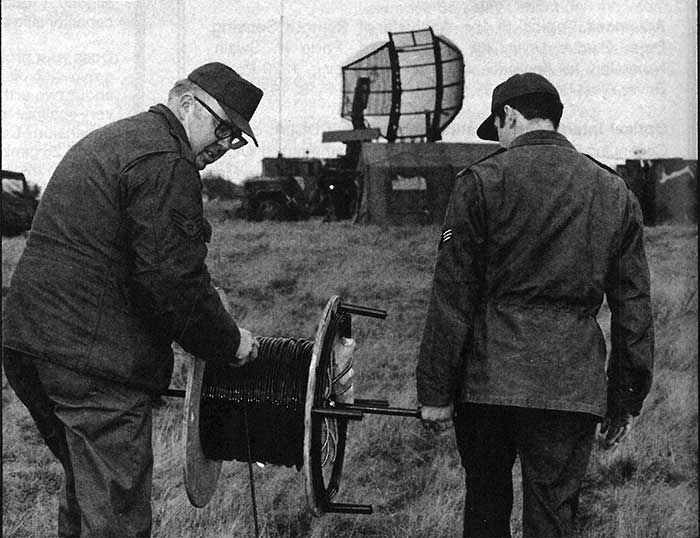
Personnel at Sembach Air Base in West Germany are shown here dropping a kilometer-long optical fiber cable that was used to connect a control center at the base with a remote radar installation. The fiber optic radar link was tested by the U.S. Air Force Electronics Systems Division and the Mitre Corporation, which designed and manufactured the link. Courtesy of Optical Spectra, March 1979.
Head-Up Displays for Aviation
(1966-1976)
Extensive research was done to develop a pilot visual aid system to improve flight safety. Head-up displays (HUD) superimpose flight information on the inner windshield of the cockpit of a jet fighter in vivid color.